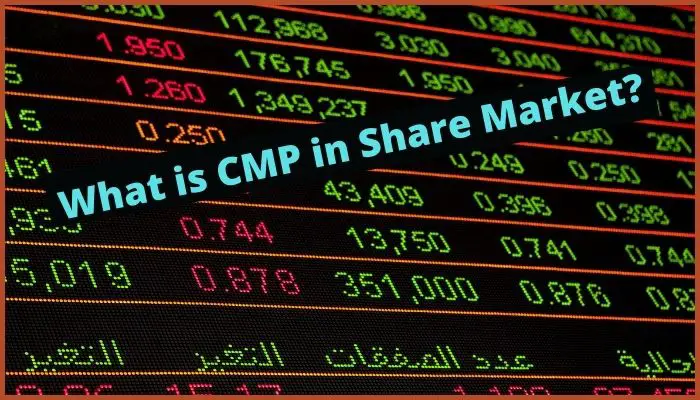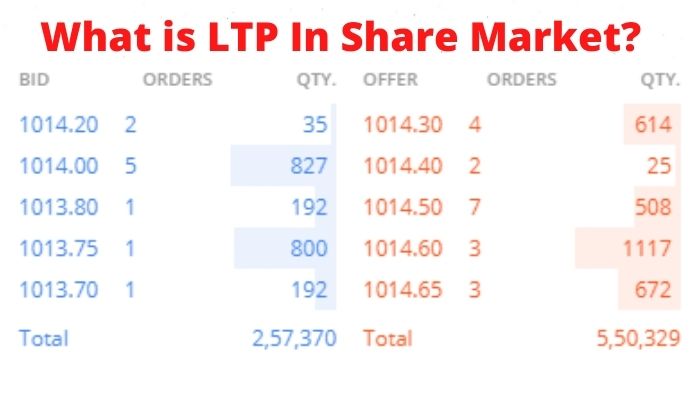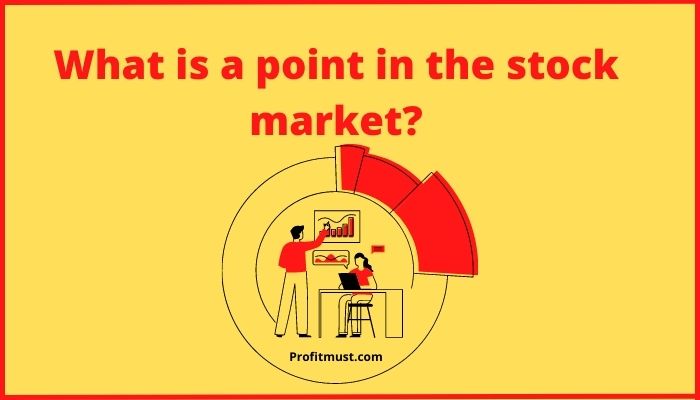Many beginners remain confused when they hear that Dow Jones lost 100 points or 200 points as they don’t know what is a point in the stock market? So let’s find out the meaning of stock market points in this blog.
Table of Contents
What is a point in the stock market?
When you read that a share has lost or gained X number of points, you’re hearing the same thing as when you hear that the stock has lost or gained X number of dollars; one point = one dollar.
Short-term results, including for the day or week, are usually described by using points to represent stock price gains or falls.
Due to the fact that points represent real dollar values, two shares can increase or fall by the same number of points yet have different percentage gains or losses.
These share points are not the same as bond or currency basis points. The relative movement of the index’s components determines the index’s points.

Example of What do points mean in the stock market?
Consider the following scenario for what do the points mean in the stock market: The share price of the imaginary business RRL Conglomerate would have dropped by 20.8 percent if it dropped 5 points from $24 to $19.
This is in stark contrast to a 5 Points loss seen by RJ whisky, which is currently selling at $205. If its stock declines $5.00 to $200, it will only have lost 2.5 percent of its value.
Difference between Points & Percentage
Keep in mind that points should not be confused with percentages or basis points (bps). When you hear that a stock has lost 10 points, the amount of the drop is determined by how high the share price is.
It’s vital to keep in mind that this point and dollar amount only apply to stocks. People frequently refer to indexes, bond prices, and currency exchange rates as being up or down X number of basis points, although these terms are not interchangeable.
One basis point equals 1/100th of a percent, thus if somebody says the dollar is up 50 basis points, they are referring to a 0.5 percent increase.
Difference between Points & Indexes
Points aren’t just for talking about individual companies; they’re also used to describe short-term changes in equity indexes, such as “the Dow Jones Industrial Average gained 50 points today” or “the S&P 500 dropped 300 points for the week.”
Points are used as a form of shorthand to express changes in the collective value of these indexes since they deal with firms worth billions of dollars.
It was much easier to remark, “The Dow rose 100 points,” rather than, “The stocks of the firms in the Dow earned $784,356,102.001, give or take a few thousandths.”

Price-Weighted Averaging
The Dow Jones Industrial Average is a simple definition of a concept that has been expanded upon. Despite the fact that a point still equals a dollar, the Dow assigns a “weight” – or level of importance – to each of the 30 stocks it tracks, and then calculates an average rise or fall based on that weight.
As a result, a one-to-two-point move in a strongly weighted component stock can change the average by a significant amount.
Price-weighted averaging is a technique that allows you to assess basic market patterns and the performance of the stock market as a whole, as well as make forecasts about where the market is headed, over the course of a trading day.
Dow Jones Calculations
The Dow Jones Index is calculated by summing the current trade values of 30 of the largest industrial-sector corporations in the United States. This list contains firms from a range of industries, including Boeing, General Electric, McDonald’s, and Wal-Mart, as of the publication date.
After determining the total, the Dow divides it by a “Dow divisor” that changes over time – for example, in 2008, the divisor was 0.125552709, and as of May 2013, it is 0.130216081 – to account for events like stock splits and mergers, establish consistency, and enable price comparisons from the beginning of time.
Analysis of Performance
Over the period of a business day, nearly continual calculations illustrate how the market is actually performing. Individual equities may perform well if the Dow drops 200 points from its previous computation and ends the day at this level, but the market as a whole is presently performing badly.
If the Dow begins to drop over time, bad overall stock behavior could signal that the market is heading toward a “bearish” market, which is defined by overall dropping stock prices and increasing risk for investors.

Conclusion
The points represent dollars in indices, however the relationship is not 1:1. In the index value, a point is simply a whole figure. You’ll need to know the current value of a stock index to figure out what the points mean.
This is all from our side regarding What is a point in the stock market? Let us know your views about what do points represent in the stock market? in the comment section.
Other interesting blogs related to What is a point in the stock market?
Trading Terms of Stock Market Which You Should Know
Frequently Asked Questions About What are Points in the Stock Market?
What does 1 point on the Dow represent?
The Dow Jones Industrial Average earns or loses points in response to changes in the prices of its component equities. The index is price-weighted, which means it moves in lockstep with the price changes of its constituents on a point-by-point basis, with a divisor applied. One dollar is equal to one point.
What are important points in stock market?
The main reason you buy a stock is that the firm is profitable and you want to be a part of its long-term prosperity. You're not investing if you buy a stock while the company isn't profitable; you're trading. A stock (or stocks in general) should never account for 100% of your total assets.
What happens if you invest $1 in a stock?
If you placed $1 into the share market per day for 30 years, you would have $10,950 in the share market. However, assuming a ten percent average yearly return, your account balance might be worth $66,044.
How are Dow points calculated?
The Dow Jones Industrial Average is a stock market index that includes 30 of the largest blue-chip stocks. The index is computed by multiplying the stock prices of the 30 firms by the divisor. When there are share splits or dividends, or when a firm is added or removed from the index, the divisor varies.
How much money is a point?
Despite the fact that one point equals one dollar, the percentage value of a one-point change can vary between organisations. The dollar amount that has changed is referred to by points, not the percentage. Two equities can drop by the same amount of points but by vastly different percentages.

